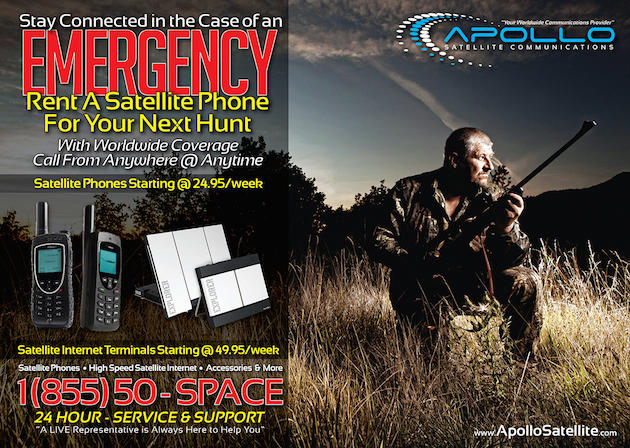Notice the word “communications.” That’s because a satellite phone, while extremely reliable, durable, and easy to use in any emergency, is also an additional item to bring along on an adventure.
In the world of travel, small is sexy. No one goes anywhere without a smartphone anymore, so it’s pointless to bring two devices that essentially serve the same purpose. However, smartphones can do far more than just make calls. They can help document trips, produce high-definition video and photos, and allow the use of notepads and calendars for pre-travel planning. Saved maps and voice memos can be accessed to navigate during trips.
The latest satellite technology from Apollo Satellite allows cell users to bring satellite service to their trusted smartphone, allowing the user to access the internet, text, send emails and voice calls—essentially, to never be lost in the wilderness without emergency contact again.

The program is downloaded as a free app on the smartphone (IridiumGO or ISAVI, based on the specific net speed needs and budget). A hotspot device, about the size of an 8-track tape, is pointed antenna-up at the open sky. The WIFI settings are accessed and the server IridiumGO or ISAVI is found and clicked. Seconds later, the user’s phone and up to four other smartphones (with the app downloaded) can access the hotspot.
The already multifunctional phone can then operate as it should, making calls, texting, or emailing from anywhere in the world within seconds.
Data charges do apply, so streaming content or using the Internet should be done judicisouly. If the usage saves a life or keeps a business in contact, the cost can easily be justified.
This represents the tip of the iceberg for the satcom world. The hubs on cruise ships now allow full internet access to guests, the streaming of entertainment, and allow videos and photos to be uploaded wirelessly. Solar panels extend battery life in the wild indefinitely, and tablet- to bucket-size dishes can give a boat or campsite Internet at a range of speeds.
With satelllite usage blending into everyday outdoor life, the sky is now the baseline instead of the limit.
Visit ApolloSat.com for more information.


